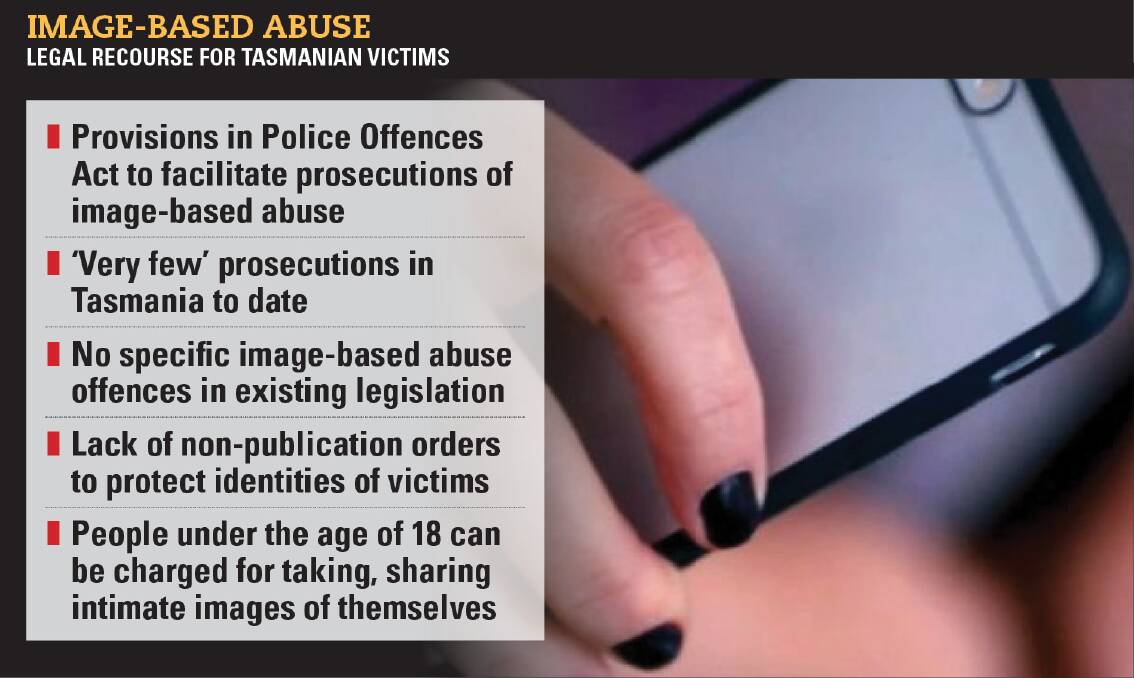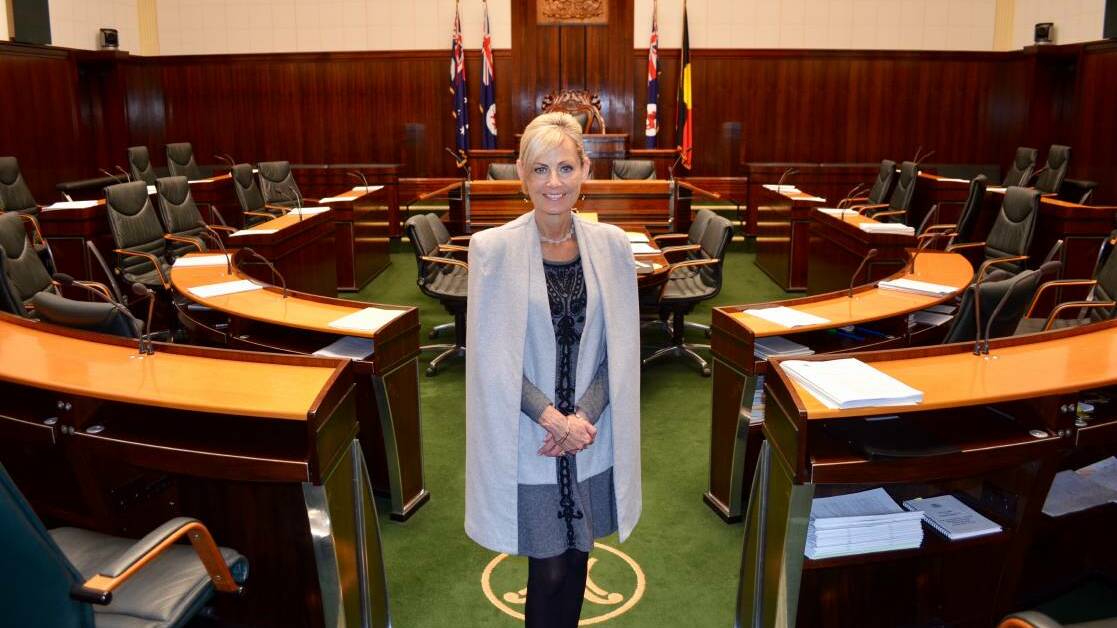
Shame is a powerful force.
Subscribe now for unlimited access.
$0/
(min cost $0)
or signup to continue reading
Shame begets ostracism.
For that reason, its mere suggestion frightens us into submission, into conformity.
And women are among the minority groups most affected by this shame culture.
RELATED COVERAGE:
We only have to look at the relative lack of prosecutions relating to image-based abuse in Tasmania to see that our society is still wracked by victim-blaming attitudes.
Women here are reluctant to drag themselves before the courts because it would see their names put on the public record, identifying them as people who took suggestive images of themselves.
If a woman is promiscuous, she’s a ‘slut’; if a man is, he’s a ‘player’.
As long as this double-standard exists, how do we encourage victims of image-based abuse to come forward and report the abuse they’ve suffered without fear of being ostracised?
‘Very few’ prosecutions
There are no laws that explicitly address image-based abuse in Tasmania, but there is scope in existing legislation to prosecute perpetrators.
Sections of the Police Offences Act make it clear that it is illegal to publish or distribute prohibited visual recordings that depict a person engaging in a private act.
And yet Law Society of Tasmania president Rohan Foon said that, as far as he knew, there had been “very few” prosecutions of image-based abuse here.
Mr Foon said a potential way of increasing the number of prosecutions relating to image-based abuse would be to introduce non-publication orders.
The Evidence Act states that people charged with committing certain sexual offences under the Criminal Code must have their names suppressed in court, so as to protect the identities of alleged victims.
“That’s the way matters could proceed through the court without affecting the reputation of the person who’s had their images shared,” Mr Foon said.
In 2015, a Senate inquiry into image-based abuse was established, with the Legal and Constitutional Affairs References Committee releasing its final report on the matter in February 2016.
A total of eight recommendations were made, which included calling on federal and state and territory governments to legislate offences for the non-consensual publication of intimate images and the threat to take or share intimate images non-consensually.
New South Wales heeded the committee’s advice - in August, it made image-based abuse a crime in the state, with perpetrators facing up to three years’ jail and an $11,000 fine.
Victoria and South Australia, meanwhile, have made it criminal to both distribute intimate images non-consensually and to threaten such distribution.
Offenders in Victoria now face up to two years in jail for distributing an intimate image non-consensually and up to one year for threatening to do so, while South Australian perpetrators face up to four years in jail for non-consensually sharing an intimate image and up to two years for threatening to do so.
Federal laws around image-based abuse are yet to be tabled in Canberra, but consultation has recently been undertaken on a proposed civil penalty regime for non-consensual sharing of intimate images.
This could result in civil penalties for image-based abuse being established at a Commonwealth level, which would impose fines on perpetrators.
The Tasmanian government made a submission as part of the consultation process, addressing the pros and cons of the proposed regime.
‘Sending a strong message’
Tasmanian Justice Minister Elise Archer did not rule out following the lead of Victoria, New South Wales and South Australia, signalling the state government could be looking to draft specific offences for image-based abuse.
“The non-consensual sharing of intimate images ... can have a serious impact on victims, including psychological ... trauma, loss of reputation, social standing or employment,” she said.
“The government is carefully considering offences introduced in other jurisdictions criminalising the non-consensual sharing of intimate images.

“We need to send a strong message that this sort of behaviour is unacceptable.”
‘Gaps’ in the law
Opposition digital economy spokeswoman Madeleine Ogilvie, meanwhile, thought there were inadequacies in Tasmania’s laws around image-based abuse.
She said there was a “gap” in the law which meant that victims of image-based abuse were unable to have images immediately removed from the internet.
“Parents want new laws to provide victims with rights,” she said.
Greens leader Cassy O’Connor said governments had to “come together” to address image-based abuse.
“The Council of Australian Governments should ... develop and fund a national strategy involving research, education and a raft of legislative changes, across both state and federal laws ... to deal with the issue of ‘revenge porn’ and better protect people from its damaging effects,” she said.
“The shame … [it] causes can lead to social isolation and self-harm.”
‘Killing their future’
The other perceived gap in laws encompassing crimes of image-based abuse in Tasmania is the potential for people under the age of 18 to be charged for taking an intimate photograph of themselves and for sending it to another person.
Detective Inspector Glen Ball confirmed this, but said police had discretion to decide whether a prosecution of that kind was in the public interest.
Women’s Legal Service chief executive Susan Fahey said this aspect of the law had hamstrung young victims.
“You don’t necessarily want to put the kid who’s taken the photo on a sex offender register,” she said.
The Council of Australian Governments should ... develop and fund a national strategy involving research, education and a raft of legislative changes, across both state and federal laws ... to deal with the issue of ‘revenge porn’ and better protect people from its damaging effects.
- Cassy O'Connor, Greens leader
"We have seen this happen in other countries.
“Should you really put them on a sex offender register, potentially killing their future before they’ve even realised they had one?”
Ms Fahey said some perpetrators of image-based abuse “deserve to be named and shamed”.
“It’s just that the victim gets shamed as well, meaning people are reluctant to report,” she said.
‘Blame and Shame’ is a five-part series from Fairfax Media, seeking to shed light on image-based abuse in Tasmania. Look out for the fifth and final part on Friday.


